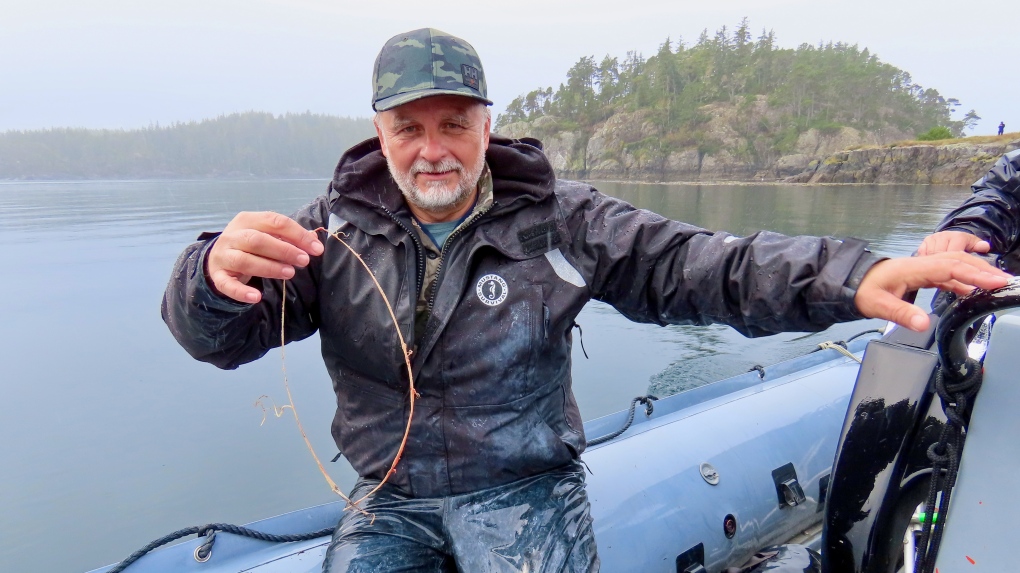A sea lion swam free after a rescue group disentangled it close to Vancouver Island earlier this week.
The Vancouver Aquarium Marine Mammal Rescue Society says the male Steller sea lion was first noticed in March, with a “deeply embedded” packing band round its neck.
The animal was free of the “life-threatening” state of affairs on Tuesday, with assist from Fisheries and Oceans Canada and the Marine Training and Analysis Society, the VAMMR mentioned.
The rescue group persevered by means of heavy rain and excessive tides, discovering the ocean lion on a rocky outcrop at Plumper Island, close to Port McNeil.
VAMMR veterinarian Dr. Marty Haulena sedated the ocean lion, after which rescuers flew a drone to trace the animal because it entered the water.
A sea lion is detangled on this picture handed out by the Vancouver Aquarium Marine Mammal Rescue Society.The aquarium says Haulena is the one vet in Canada, and one in every of few globally, who’s certified to carry out the process that includes utilizing a dart to manage the sedation remedy.
A group in a single boat reached the ocean lion and eliminated the packing band, then rescuers on a second vessel administered reversal medication to wake the animal up.
The aquarium says the “huge” sea lion swam away freely after about six minutes.
 Dr. Marty Haulena is seen throughout a sea lion rescue operation on this picture handed out by the Vancouver Aquarium Marine Mammal Rescue Society.“This disentanglement wouldn’t have been potential with out the diligent reporting by the north island neighborhood and the important assist from DFO and MERS,” mentioned Haulena in a media launch Friday. “Whereas this rescue is essential, it’s solely a small a part of the answer. We have to concentrate on stopping marine particles from reaching the ocean within the first place.”
Dr. Marty Haulena is seen throughout a sea lion rescue operation on this picture handed out by the Vancouver Aquarium Marine Mammal Rescue Society.“This disentanglement wouldn’t have been potential with out the diligent reporting by the north island neighborhood and the important assist from DFO and MERS,” mentioned Haulena in a media launch Friday. “Whereas this rescue is essential, it’s solely a small a part of the answer. We have to concentrate on stopping marine particles from reaching the ocean within the first place.”
The rescue society estimates greater than 400 sea lions in B.C. are at present entangled in particles together with rope, nets, packing bands and fishing strains.
“If left untreated, these entanglements typically lead to a chronic and painful dying,” the VAMMR wrote.
“Ongoing collaboration between response organizations, authorities companions, and native communities is important for future efforts to guard these animals.”




